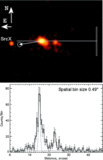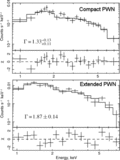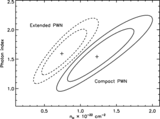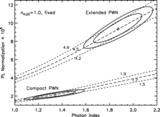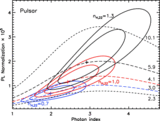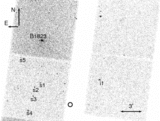Image Details
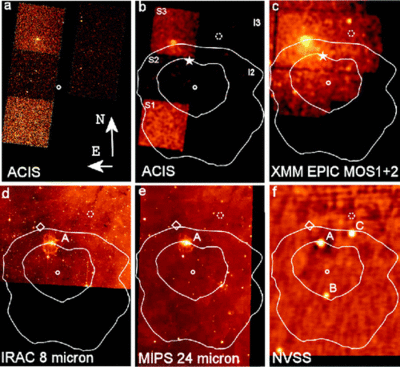
Caption: Fig. 3.
Large‐scale images of the B1823 vicinity and the central part of HESS J1825 observed with different telescopes and at different wavelengths. All eight panels show the same area on the sky. The TeV brightness contours (adopted from A06) are overlaid on top of the images in panels b–f. (a) ACIS S3, S2, S1, I2, and I3 image (0.7–7 keV; pixel size 3.94﹩\arcsec﹩), corrected for the exposure map nonuniformity. (b) Same image with point sources removed (except for B1823) and Gaussian (15.7﹩\arcsec﹩ kernel) smoothing applied. (c) XMM‐Newton EPIC MOS1+MOS2 combined image (0.5–8 keV; pixel size 10﹩\arcsec﹩; smoothed with the 40﹩\arcsec﹩ Gaussian kernel). (d) Spitzer IRAC 8 μm image from the GLIMPSE survey. (e) Spitzer MIPS 24 μm image from the GLIMPSE survey. (f) NRAO VLA Sky Survey (NVSS) image at 1.4 GHz. The star in panels b and c marks the location of the brightest part of the extended IR and radio source A seen in the Spitzer and NVSS images. The diamond in panels d–f marks the B1823 position. The small white circle marks the position of the brightness peak in the distribution of the extended TeV emission from HESS J1825. The projected place of birth of the pulsar estimated from the measured proper motion (see § 3) and pulsar’s characteristic age (﹩\tau =21﹩ kyr) is shown by the dashed circle.
Copyright and Terms & Conditions
© 2008. The American Astronomical Society. All rights reserved. Printed in U.S.A.



